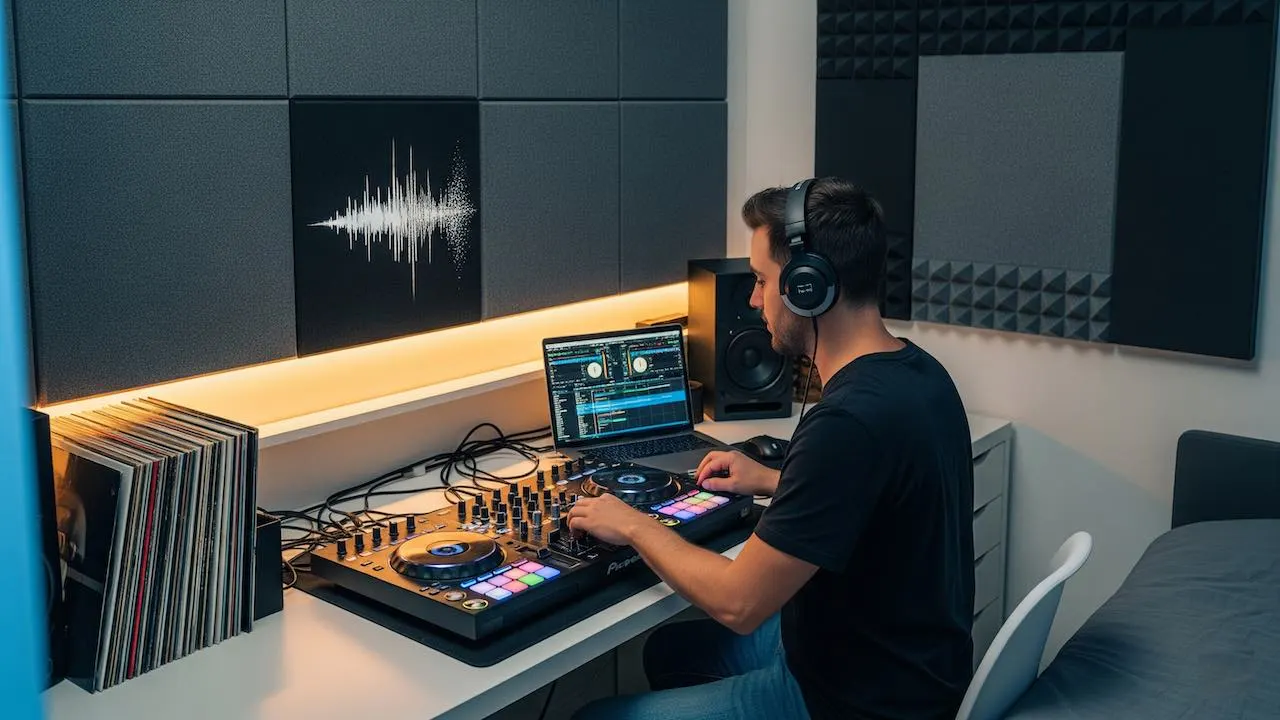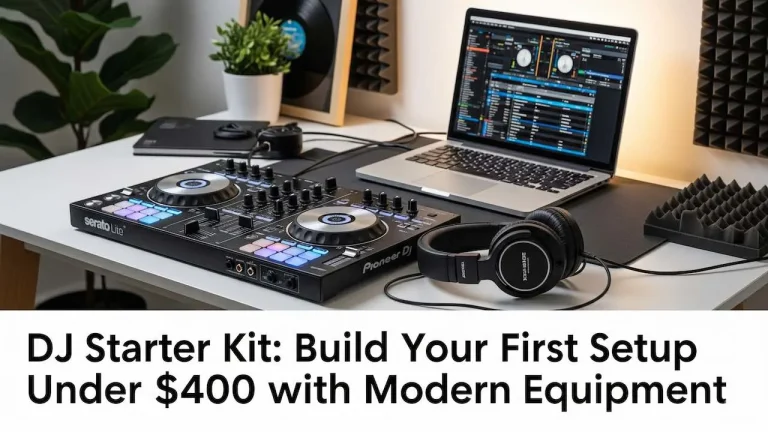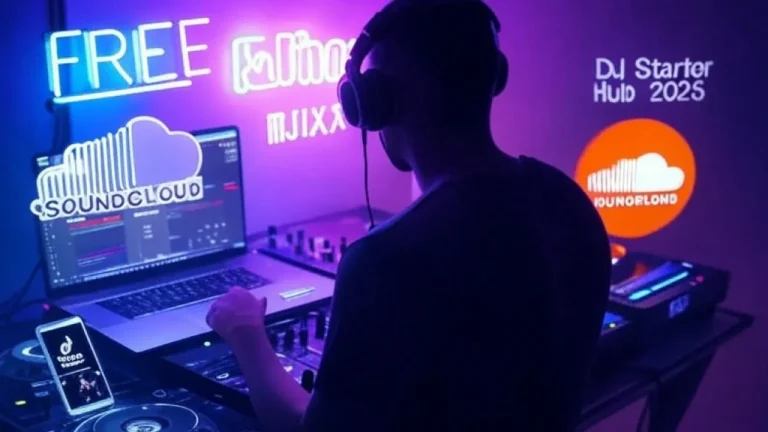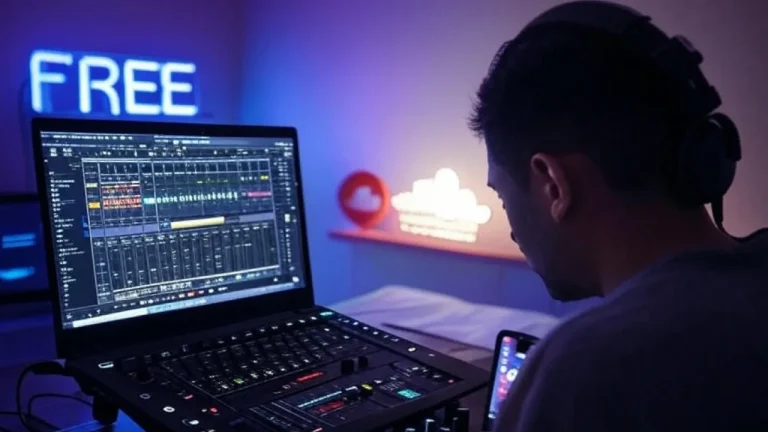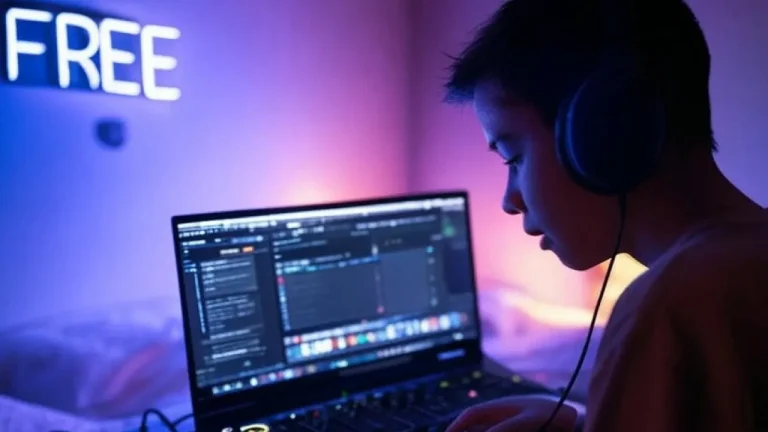Practice DJing in your bedroom without noise complaints by using closed-back headphones, sound isolation techniques, and strategic timing. Modern DJs can master their craft silently through digital solutions, acoustic treatments, and neighbor-friendly equipment choices that maintain sound quality while respecting living spaces.
Bedroom DJing presents unique challenges for aspiring artists who want to perfect their skills without creating neighborhood tensions. However, with the right approach and equipment, you can transform your bedroom into a professional practice space that keeps both your passion and your relationships intact.
Why Bedroom DJ Noise Solutions Matter
Noise complaints affect 73% of apartment-dwelling musicians according to housing surveys. Additionally, practicing during inappropriate hours can lead to lease violations, fines, and damaged neighbor relationships.
Professional DJs understand that consistent practice builds muscle memory and timing skills. Meanwhile, bedroom practice offers privacy, convenience, and cost savings compared to renting studio space. Most importantly, sound management techniques allow you to practice any time while maintaining household harmony.
Silent DJ Practice Methods
Headphone mixing eliminates external sound completely while maintaining full audio quality. Furthermore, this method allows 24/7 practice sessions without time restrictions.
Professional DJ Headphones
Choose closed-back DJ headphones like Sennheiser HD 25, Audio-Technica ATH-M50x, or Pioneer HDJ-X10. These models provide excellent sound isolation and accurate frequency response for professional mixing.
Key features include swiveling ear cups for one-ear monitoring, replaceable cables for durability, and impedance ratings between 32-80 ohms for optimal controller compatibility.
Digital DJ Controllers
Modern DJ controllers connect directly to laptops and headphones, eliminating speaker requirements entirely. Popular options include Pioneer DDJ-FLX4, Hercules DJControl Inpulse 200, and Native Instruments Traktor Kontrol S2.
These controllers feature built-in sound cards, multiple headphone outputs, and software integration with platforms like Serato DJ, Virtual DJ, and Rekordbox.
Time Management for Bedroom DJing
Practice during daytime hours between 9 AM and 6 PM to comply with most apartment quiet hour policies. Additionally, weekday practice sessions typically generate fewer complaints than weekend sessions.
| Time Period | Noise Level Allowed | Best Practice Method |
|---|---|---|
| 9 AM – 6 PM | Moderate (up to 55dB) | Low-volume speakers + headphones |
| 6 PM – 10 PM | Low (up to 45dB) | Headphones only |
| 10 PM – 9 AM | Minimal (up to 35dB) | Silent headphone practice |
Communication with Neighbors
Inform neighbors about your practice schedule and exchange contact information for immediate feedback. Most neighbors appreciate advance notice and reasonable time boundaries.
Consider offering headphone demonstrations to show your commitment to noise control. This builds trust and often leads to more flexible practice arrangements.
Sound Isolation Techniques
Dense materials absorb and block sound transmission more effectively than lightweight foam. However, complete soundproofing requires professional installation and significant investment.
Quick Sound Reduction Methods
Place thick rugs or carpets under DJ equipment to reduce vibration transmission through floors. Additionally, position heavy furniture like bookshelves against shared walls to add mass barriers.
Hang thick blankets or moving pads on walls during practice sessions for temporary sound absorption. These portable solutions work effectively without permanent modifications.
Equipment Placement Strategies
Position DJ setups away from shared walls, especially bedrooms where neighbors sleep. Furthermore, elevate equipment on rubber isolation pads to minimize vibration transfer.
Use spiked speaker stands instead of shelf mounting to prevent wall vibrations. This technique isolates bass frequencies that commonly cause neighbor complaints.
Budget-Friendly Soundproofing Solutions
Acoustic foam panels cost $2-5 per square foot and provide moderate sound absorption for mid and high frequencies. However, they offer minimal bass frequency control.
| Solution | Cost Range | Effectiveness | Installation |
|---|---|---|---|
| Acoustic foam panels | $50-200 | Medium frequencies | Adhesive mounting |
| Heavy curtains | $30-100 | High frequencies | Curtain rod installation |
| Rockwool insulation | $40-80 | All frequencies | Frame construction required |
| Door seals | $10-25 | Sound leakage prevention | Adhesive strips |
DIY Acoustic Treatment
Build portable acoustic panels using wooden frames and rockwool insulation covered with fabric. These panels provide professional-level sound absorption at fraction of commercial costs.
Install weatherstripping around doors and windows to eliminate sound leaks. Small gaps allow significant sound transmission, so thorough sealing improves overall noise reduction.
Advanced Bedroom DJ Setup
Professional bedroom studios combine multiple noise reduction techniques for maximum effectiveness. Moreover, layered approaches address different frequency ranges and transmission paths.
Equipment Recommendations
Invest in audio interfaces with multiple headphone outputs for guest practice sessions. Popular models include Focusrite Scarlett 2i2, PreSonus AudioBox USB 96, and Native Instruments Komplete Audio 1.
Use DJ software with built-in effects and samples to reduce external equipment requirements. Programs like Serato DJ Pro, Traktor Pro 3, and Virtual DJ offer comprehensive mixing capabilities.
Room Layout Optimization
Position DJ equipment in room corners to minimize sound reflection and improve acoustics. Additionally, create separation between practice area and bed using furniture or room dividers.
Install LED strip lighting to maintain energy and mood during late-night practice sessions without disturbing household members. Proper lighting reduces eye strain during extended mixing sessions.
Noise Level Monitoring
Sound level meters help maintain appropriate volume levels and provide objective measurements for neighbor discussions. Apps like SoundMeter or NIOSH Sound Level Meter offer accurate readings.
Regular monitoring helps develop awareness of volume levels and builds habits for respectful practice. Most residential areas have noise ordinances limiting sound to 45-55 decibels during evening hours.
Volume Control Techniques
Set maximum volume limits on DJ software to prevent accidental loudness. Many programs include limiter features that cap output levels automatically.
Practice volume fading and EQ techniques using headphones to develop subtle mixing skills. These techniques translate directly to live performance situations where volume control matters.
Building Neighbor Relationships
Positive neighbor relationships prevent conflicts before they start. Furthermore, open communication often leads to mutually beneficial arrangements.
Offer to DJ neighborhood events or parties to demonstrate your skills and build community connections. This approach transforms potential complaints into performance opportunities.
Share your practice schedule and contact information for immediate feedback. Most neighbors appreciate knowing when practice sessions occur and having direct communication channels.
People Also Ask
Yes, by using closed-back headphones and practicing during appropriate hours. Digital DJ controllers eliminate speaker requirements while maintaining full functionality for skill development.
Practice during daytime hours between 9 AM and 6 PM for moderate volume levels. Evening practice from 6-10 PM requires headphone-only sessions, while late-night practice demands complete silence.
Professional DJ headphones provide complete sound isolation and accurate audio reproduction. Models like Sennheiser HD 25 and Audio-Technica ATH-M50x offer studio-quality sound without external noise.
Basic soundproofing solutions cost $100-500 for acoustic foam, curtains, and door seals. Professional soundproofing with mass-loaded vinyl and insulation ranges from $1,000-5,000 depending on room size.
Bass frequencies penetrate walls more easily than mid and high frequencies. Headphone practice eliminates most sound transmission, while speaker practice requires acoustic treatment for effective noise control.
Digital DJ controllers with built-in sound cards and headphone outputs provide silent practice capabilities. Popular options include Pioneer DDJ series, Hercules controllers, and Native Instruments Traktor models.
Introduce yourself, explain your practice schedule, and provide contact information for feedback. Offer headphone demonstrations to show noise control commitment and discuss mutually acceptable practice times.
Noise complaints affect approximately 70% of apartment musicians who use speakers. However, DJs using headphone-only practice methods rarely receive complaints when following appropriate time guidelines.
